- Susan Foutz
- Director of Research and Evaluation
- Move2Learn
- http://www.move2learn.net/
- Children's Museum of Indianapolis
- Judy Brown
- SVP Education Emerita
- Move2Learn
- http://www.move2learn.net/
- Phillip and Patricia Frost Museum of Science
- H Chad Lane
- http://hchadlane.net
- Associate Professor
- Move2Learn
- http://www.move2learn.net/
- University of Illinois at Urbana-Champaign
- Andrew Manches
- https://www.ed.ac.uk/profile/andrew-manches
- Associate Professor
- Move2Learn
- http://www.move2learn.net/
- University of Edinburgh
- Sara Price
- http://saraprice.wordpress.com
- Professor
- Move2Learn
- http://www.move2learn.net/
- University College London
- Cathy Ringstaff
- Senior Research Associate
- Move2Learn
- http://www.move2learn.net/
- WestEd
Public Discussion
Continue the discussion of this presentation on the Multiplex. Go to Multiplex






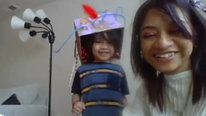
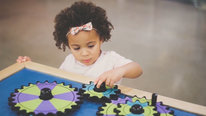
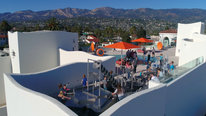
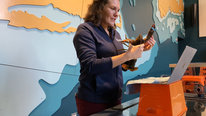
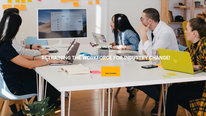
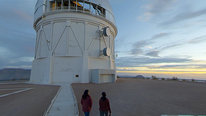
Susan Foutz
Director of Research and Evaluation
We’re so glad you stopped by our video! The Move2Learn team investigated how hands-on experiences and interactive museum exhibits can help young children aged 3-6 years express, communicate, and develop their scientific thinking. We think this work and the theory of embodied learning will be of interest to science center and museum educators, interpreters, facilitators, and program developers; exhibit designers and developers; educational researchers; early years teachers; and anyone who guides young children as they explore the world around them.
For more information about Move2Learn visit:
We are grateful for the support of our project funders: The National Science Foundation, Wellcome Trust and the Economic and Social Research Council. This collaborative project was made possible by the contributions of many partners in the US and UK: The Philip and Patricia Frost Museum of Science, The University of Edinburgh, Glasgow Science Centre, The University of Illinois Urbana-Champaign, University College London, The Children’s Museum of Indianapolis, Science Museum, Learning through Landscapes, and Sciencenter.
Please post your ideas, questions, and feedback about the video and the project! We are ready for a rich and lively discussion!
Sasha Palmquist
H Chad Lane
Andrew Manches
Judy Brown
SVP Education Emerita
Managing this ambitious collaboration had its challenges. If you are working through or starting a new collaboration take a look at the Summative Report on the InformalScience.org link provided above for some of the lessons learned.
H Chad Lane
Stephen Uzzo
Chief Scientist
Thanks Judy and Team! I have had a keen interest in embodied cognition or "enaction" for a long time and this ambitious and innovative project makes me think of a question that this work might help answer. When people enact their cognition in their environment, to what degree does it work the other way around? In the video you well demonstrate the notion that children can also be taught to better understand ideas through embodiment that is demonstrated to them by adults. What is the relationship between self-initiated interaction and them mimicking the gestures of others in terms of learning? This also begs the question: what is the relationship between doing and gestures that demonstrate things like physics concepts in abstract ways?
Susan Foutz
H Chad Lane
Andrew Manches
Associate Professor
Hi Stephen,
You ask some great and challenging questions here. Personally, I have found Andy Clarke’s work helpful in some of these discussions where he suggests it more helpful to think in terms of cognitive activity rather than ‘cognition’ which tends to present thinking as something located in a particular place. So in any particular task, thinking emerges in a dynamic process between child and resources in the environment. Even ‘self-initiated interaction’ is shaped by the social and physical context. Educators have much expertise in prompting particular types of interaction and thinking, and I see gesture as one part of this scaffolding. Gestures provide an action representation that offers children a resource to structure ideas as they interact. Like others resources such as diagrams or language, gestures provide a more abstracted representation of the world. Therefore, I see them as a powerful tool to help children conceptualise what they are “doing”. But without that ‘doing’ experience, adults’ gestures may have little meaning for children.
I realise I am thinking as I write, and will likely want to re-write this response after a bit more thinking. Which makes it a great question, thank you!
Brian Drayton
I will add that Dewey argued that the focus on cognizing ignored a wide range of kinds of knowing, and — under the guidance of imagination as well as other kinds of reflection — the integration of all these inputs, which tend to get separated as esthetic, cognitive, emotional, etc., are productive of both deep insight and deep inquiry. The kinds of exploration you are reporting on here will be valuable for learners of any age!
Andrew Manches
Associate Professor
Thank you Brian. I'm aware of Dewey's work on a broad level so your comment has inspired me to read in more detail. Any particular work you can suggest?
Brian Drayton
You might want to start with Stephen Fesmire's book Dewey, which is a remarkable overview of Dewey's entire body of work.
The specific points I raise are beset found in Experience and Nature, but I wouldn't make that your first reading of Dewey, though it's well worth the effort (the TERC Dewey Group has read it 3 times over the last 20 years).
More generally, to sort of "get" Dewey's style, I suggest Democracy and Education (I know some people who read it annually!). Most of his books touch on manysubjects — knowledge and knowing, logic, inquiry, aesthetics, ethics, and education. his philosophy was a growing fabric. enjoy!
Billy Spitzer
PI
Thank you Susan and Judy for such a clear explanation of "embodied learning" and how it can be enhanced, with clear recommendations for practitioners on how to promote this mode of learning. Your project reminded me of the PISEC family learning study from years ago, both in terms of the project goals and the mutli-faceted collaboration. I was wondering if you had any plans, as PISEC did, to test out the recommendations in practice, and then assess the impact of the interventions?
H Chad Lane
Susan Foutz
Director of Research and Evaluation
Hi Billy! Wow! Being compared to PISEC is such an honor. It was such a foundational project with implications for practice. At The Children's Museum of Indianapolis, we use the PISEC design principles today to design interactives that engage the multi-generational groups. The video's three recommendations did emerge out of the design-based research approach the Move2Learn team used, particularly with regards to the third recommendation (Design experiences to encourage meaningful movements).
The US team does not currently have plans for further studies in this exhibit-focused direction. I'm not sure about the UK team since so many of their museums are still closed. As a group, we think there is a lot still to be investigated with regards to exhibit design and in how gallery staff (facilitators, interpreters, etc.) can use embodied learning in presentations and conversations. The embodied cognition literature has many examples of the use of gestures in the classroom, so it makes sense that it would have the same benefits in informal science education settings.
Jacqueline Genovesi
H Chad Lane
Billy Spitzer
PI
Thanks Susan, those examples are so helpful. It's unfortunate to hear about the impacts of COVID-19 on the research, hopefully some of this work can be picked up again in the future!
H Chad Lane
Associate Professor
It definitely shut down some of our plans, but we lucked out with the data we collected at Sciencenter in Ithaca, NY. We went about a little more two months before the pandemic kicked in. We had so much data of 3 and 4 year olds to enjoy and analyze during the last year :)
Judy Brown
SVP Education Emerita
Hi Billy The Move2Learn project was comprised of three universities and six informal education sites, each with different exhibits and learning environments. Using the same protocol we in essence conducted six different studies to support the recommendations articulated in the video. Several of these smaller studies have been or are in the process of being published. For example, https://www.tandfonline.com/eprint/XEMUNF4THYWSUPSNWIXT/full?target=10.1080/09500693.2021.1909771.
As the project winds down several of the partners have plans for additional studies. With regard to Collaboration a large scale professional development proposal has been submitted and I am hopeful that we might be able to impact practice in this area as well.
Jacqueline Genovesi
Susan Foutz
H Chad Lane
Billy Spitzer
PI
Judy, thanks for the info on the additional studies! I think this type of research-informed design intervention is so important, and it's great to have more examples in the field.
Nickolay Hristov
Senior Scientist, Director, Associate Professor
Great craft in putting together the video with a mix of visual styles and expertly supported examples “from the field”! Your work elicits many thoughts - about multimodality in general and the importance of exposure to and development at an early age and the many benefits from the directionality of the effects. I spend much of my time in the space of information design and multimodality of communication and expression and am intrigued by some of your experience and designs. There is much to learn from them for benefit in informal AND formal settings across the age spectrum.
I also note that your applications and examples stand in contrast to the increasing prominence and use of embodied experiences allowed by virtual and immersive technologies. Is that because of the young age of your participants and the still shockingly awkward technological implementations for virtual, augmented and mixed-reality glasses, headsets etc.? The resources that you reference above likely provide the answer to some of these thoughts and questions but I am wondering if, for the sake of the conversation here, you can provide your synthesis and personal perspective from that work. I am looking forward to diving into your project materials further.
Susan Foutz
Director of Research and Evaluation
Hi Nickolay--You are right! Virtual and immersive is where many museums seem to be going. We were sensitive to the fact that many exhibits designed for this age group are very physical and hands-on. Parents seek out that type of sensory play and it is very popular with this age group! Sites in the US and UK looked at exhibits that were full of physical manipulatives like balance tables, water tables/dam building, and ball runs. But one of the exhibits we focused on in the US was an immersive, digital space: River of Grass at the Frost Museum of Science uses projections on the walls and floor. See the YouTube video created by the design studio to get a look at it in action. I think its a great example of an immersive digital space that is appealing and age appropriate for pre-school aged children. River of Grass also includes a traditional-style water table that shows how the built environment impacts water flow of Florida's Everglades. Our study asked families to interact with both portions--the immersive digital and the physical water table. Since they were designed to support each other and families commonly engage with the study did not treat them as two separate conditions.
Stephen Uzzo
Chief Scientist
Thanks, Susan. Rivers of Grass is gorgeous! Using these kinds of experiences as learning labs for embodied interaction in complex environments is an exciting way to figure out how kids deal with complexity, what they attend to, and how they employ causal reasoning about phenomena they observe and interact with through gestures. I would be interested to know your experience in observing the evolution of causal reasoning and how it changes in youngsters at different ages, and whether you can make any generalizations about that. Also, whether you are looking at the role of social interactions in embodied learning. In Connected Worlds (our “version” of Rivers of Grass), while, intended for older age groups (primarily early teens, but we study adult learning too) we focus on group interaction to see how social systems cope with environmental questions and problems through gesture and communication. But, though we do get groups of very young children (since it only requires gross motor skills to manipulate the logs and interact with the environment through gestures), we have not studied how these kids interact.
Susan Foutz
H Chad Lane
Associate Professor
Hi Stephen, thanks for your great questions and comments. Re: causal reasoning, at the US sites and in our interviews we asked various kinds of questions that captured emotional aspects of the experience as well about the science content. Some of the science questions did get at causal aspects relevant to the exhibit (like water flow or animal behavior in response to human activity). We can't say much about the evolution of that reasoning, but do have countless examples of kids using exhibit-related gestures while explaining, and this frequently connected to them trying describe some cause and effect. We did see huge differences with our 5 year olds compared to our 3-4 year olds - not only in behavior (like simply responding at all to our interview questions), but also in their ability to remember details and give good explanations.
On the topic of social interactions, I will first say that I've always loved what you guys do at Connected Worlds - you have a great model for encouraging social interaction and using the exhibit for enacting shared goals. We certainly found all kinds of spontaneous social interactions in ROG, most of which were between parents and their children, but sometimes between children. I would say most fell in the category of "look at this" or "try this", with a lot of pointing and positive emotions. In the video you can see the Mom and Son imitating the alligator through gestures - that was a beautiful example of what we liked to see, although it was not as common as we would have wanted. Many times kids were so excited they just wanted to explore and see as much as possible, which is probably why pointing was dominant.
Susan Foutz
Director of Research and Evaluation
River of Grass was a high energy space that was so engaging to this age group! I heard from the University of Illinois and Frost Museum of Science teams that it was quite challenging to collect data as a result. They ended up using go-pros on the child, a lapel mic on the adult, and research team member videoing from a few feet away!
Judy Brown
SVP Education Emerita
Due to the activity of the children in this very active and sometimes noisy space observational data in real time was difficult but because the kids were "technology loaded" (parent was mic'd as well )we were able to code quite easily with very clear audio between adult and child. The observation tool for this project is in the PRISM toolkit that you can access on informal science.org link above and is focused on the interaction between adult and child. In quieter exhibit areas or single focus exhibits it is easy to use live. There is also a training guide that includes video to practice with that you might be interested in using or adapting.
Susan Foutz
Allison Heaslet
Great video and I love the animation! Embodied learning is so important and I couldn't help but think of deaf children using ASL and the importance of gestures having meaning! Is this somehow apart of your research?
Andrew Manches
Associate Professor
Hi Allison,
As Cathy says, this was not part of the main project; it is however becoming part of the follow-on project in the UK that is looking at the implications of Move2Learn for teachers. We are working directly with teachers and STEM orgainsations (as well as our museum/centre partners), and a re-occurring theme is the value of this research for diverse groups of children – including SEN, deaf children and second language learners. Here we are drawing on experts from these communities, including some great work from Dr Audrey Cameron (who I am lucky enough to mentor through her new fellowship at Edinburgh https://www.ed.ac.uk/profile/audrey-cameron) . Audrey has done great work in developing British Sign Language for Science concepts. It has also been fascinating hearing her experiences as a deaf science teacher teaching in mainstream schools. One particular anecdote stuck with me. She recounted how she explained concepts to children through sign language at the front of the class, and the children would listen and respond to the interpreter who was at the back. She found that after a while, children started responding to her signs before they were interpreted. This highlighted how representational and communicative the signs were. There was a recent paper by Susan Goldin-Meadow’s lab that highlighted the value of bringing together research from gesture and sign language communities and I totally agree. Some implications from the Move2Learn project is the way that children’s gestures develop as they learn, and how gestures vary in the types of metaphors they draw upon for certain science ideas.
Susan Foutz
Allison Heaslet
Susan Foutz
Director of Research and Evaluation
Some gestures are highly representational. Others are not. Instead they might direct your attention to something that is visible but not close at hand (pointing) or show the relative size or positions of objects that are not present. ASL as a language is more complicated than gesturing. It has grammer just like any language. But looking at ASL or BSL, you can see that some signs are representational and some are not, just like in gesturing. So there is a lot of overlap. Signing is also part of a culture. We should remember to work with members of the deaf community and rely on their expertise in the language.
Cathy Ringstaff
Senior Research Associate
Hi Allison! This was not part of our research on this particular grant. I agree that it would be interesting to consider ASL in future grants on this topic. Thanks for your question!
Jessica Sickler
What an interesting project! I look forward to reading the papers coming out of this work. It definitely reminds me of how important it's been as a researcher to have video recording of our interviews with kids (3rd-5th graders) as we presented them with data literacy problems/challenges. As you note, often kids have an understanding of a complex idea, but the vocabulary is just beyond their grasp. Gestures, pointing, and other communication strategies ended up being part of our coding protocol in some places.
Your take-home message also reiterates, for me, the critical importance of arts education for all. When you suggest that we should all think more about how using and encouraging use of bodies in meaning-making... Theater and dance training is all about thinking deeply about how you use your body and face to communicate beyond words, and that has relevance for all sorts of teaching and learning.
H Chad Lane
Susan Foutz
H Chad Lane
Associate Professor
Thanks for your feedback and positive comments Jessica! Between our planning grant and the grant itself, we had about 5 years to think a lot about those issues and (obviously!) feel very similarly about the importance of gesture/movement/embodiment. Although our data was really messy as one would expect from collecting data in museums with 3-5 year olds, we do have a clear message that kids will recruit the gestures they use in an exhibit when they explain it later. So if an exhibit emphasizes specific movements, that becomes part of the child's communicative toolkit (and thus it is really important to think in advance about what gestures and movement the exhibit encourages).
You are probably aware of the rich literature on gesture and mathematics learning, which is likely very relevant to your work (by Susan Goldin-Meadow, Martha Alibali, and others). We also were very lucky to get Art Glenberg on our advisory board who did a ton of the early work on embodied cognition in children.
Quick question back to you: how did you code the gestures in your interview data? We used McNeill's framework and focused on understanding the role of representational gestures.
Susan Foutz
Jessica Sickler
Thanks for the reference, I will check that out! We didn't expect gesture would be part of our - definitely not in our theory of change - but possibly it is an enabling tool that happened to emerge on the fringes of student talk. I'll share the idea with our curriculum developers, to be sure. (Our project video is here, although it's mostly focused on the process of adapting in-person, materials-based research to virtual.)
Because we weren't focused on gesture, it's not central to our coding. But when a child's movement was pertinent to understanding what meaning they were making, we worked it in to make allowances for it as a way of demonstrating understanding along with words. A big example was kids who tilted their heads 90-degrees when trying to figure out the y-axis -- that became one indicator that the convention/default of rotating text is not the easiest for a 3rd grader to read (and is unnecessary and solvable). Or kids who used gestures to help them explain their thinking about the relationship between rainfall and the amount of water that would collect or how high a river would go; I remember that being really helpful with students for whom English wasn't their first language.
H Chad Lane
Susan Foutz
Director of Research and Evaluation
Move2Learn was a complex project with 5 museums, 3 universities, one informal outdoor education organization, and an external evaluator! Geographically, we were spread across Scotland, England, Florida, Illinois, Indiana, California, and New York. With data collection occurring at 6 different sites with teams of researchers and museum practitioners we learned a lot about collaboration. Please see the summative evaluation report Judy referenced above, plus these posters recently presented at the AERA annual conference to learn more about the collaboration:
Jacqueline Genovesi
Thank you for sharing these resources. Very interesting project!
H Chad Lane
Susan Foutz
Natalie Bortoli
This is a fantastic project. Thank you for sharing! Working in a children's museum myself, I am always thinking about how we (through programs and exhibits) offer the opportunity for children to use multiple modes for learning and expression. Your work has given me additional insight into the power of physical movement and gesture. While we commonly think about the relationship between movement and spatial learning, I honestly hadn't quite considered the full extent of other realms of STEM learning to which embodied learning and gesture applies. I will be eager to continue to follow your project and learn from its findings. Thank you!
H Chad Lane
Susan Foutz
Susan Foutz
Director of Research and Evaluation
Natalie, You might want to check out our PRISM toolkit. PRISM stands for "Practitioners and Researchers Investigating Sensorimotor Movement" and the toolkit includes an observation tool. Called "Embodied Interaction Scaffolding Observation Tool" or EISOT, the observation tool was developed for use by museum practitioners and/or researchers to capture how adults use action and gesture to support children’s learning during exhibit interactions. We hope to hold a virtual workshop to train practitioners on the use of EISOT later this year. Stay tuned!
Eric Hamilton
Lovely :) The script for the video was quite explanatory and helpful. Thank you.
H Chad Lane
Susan Foutz
Martin Storksdieck
This is a beautiful video - so clear, so useful, so enjoyable to watch. Thank you!
H Chad Lane
Susan Foutz
Judy Brown
SVP Education Emerita
Thank you Martin. I was so pleased that we could develop a product that represented both sides of the pond. Andrew and Susan are our stars!
Martin Storksdieck
Susan Foutz